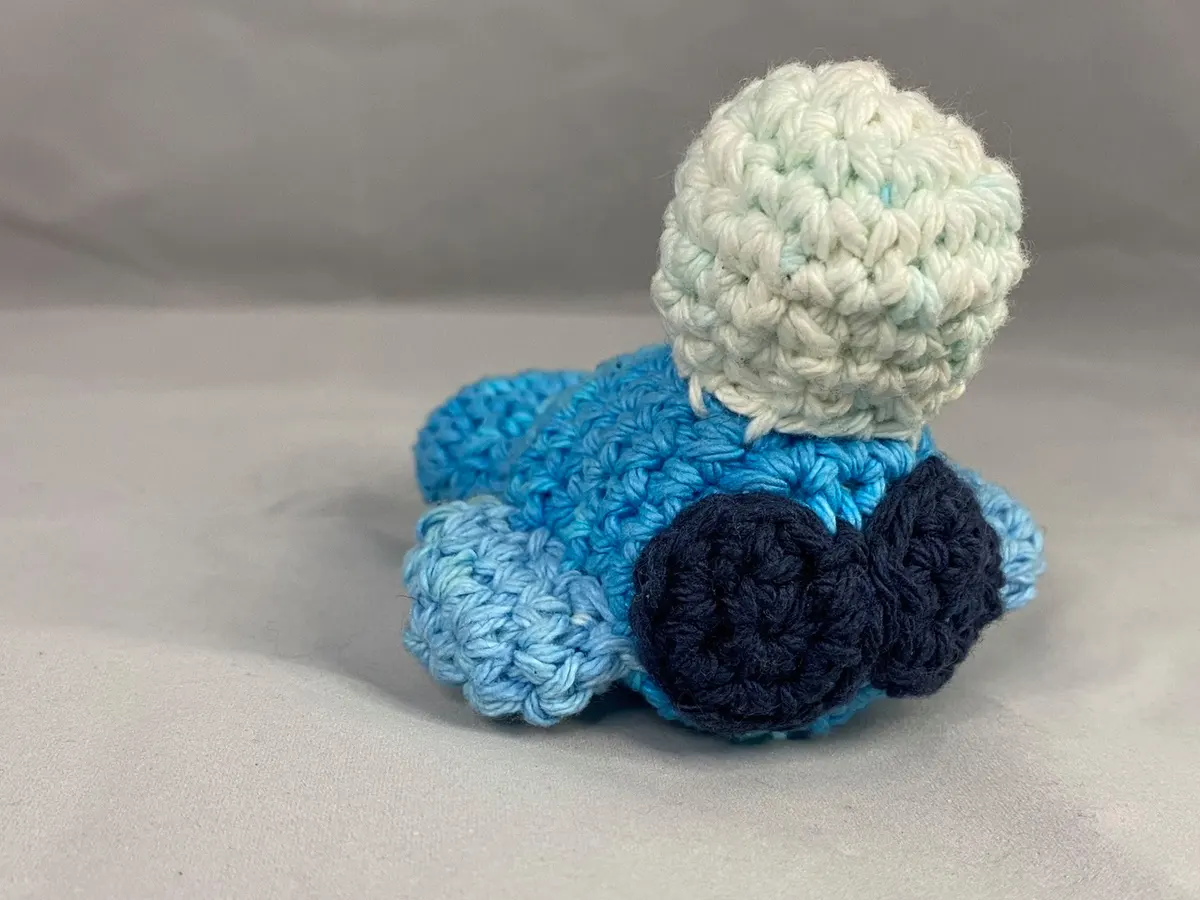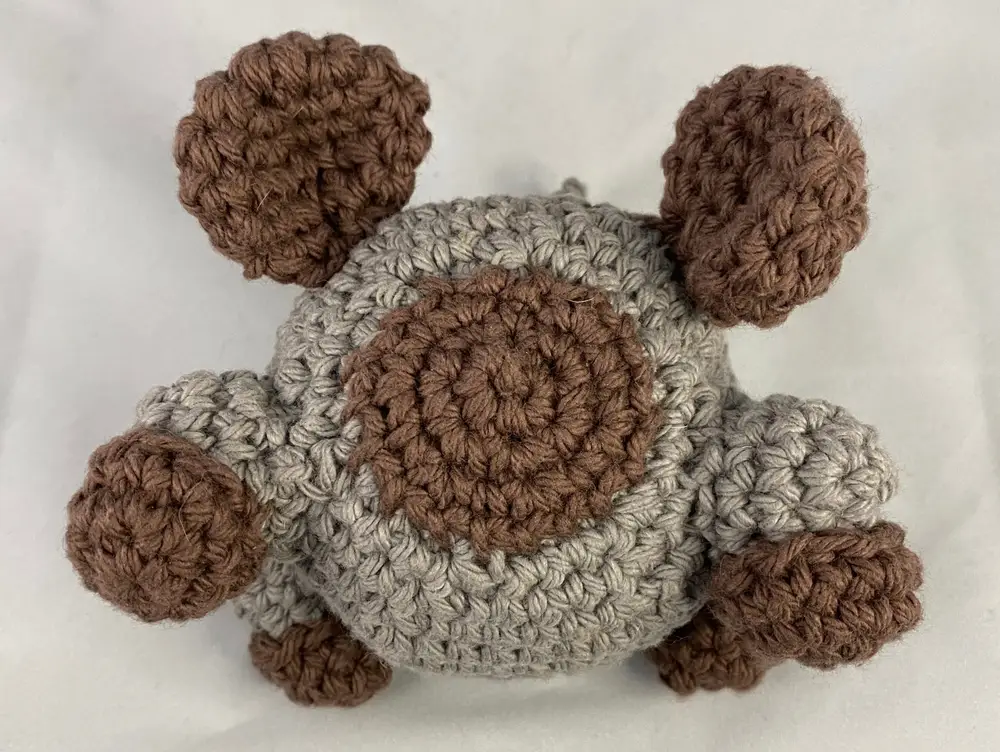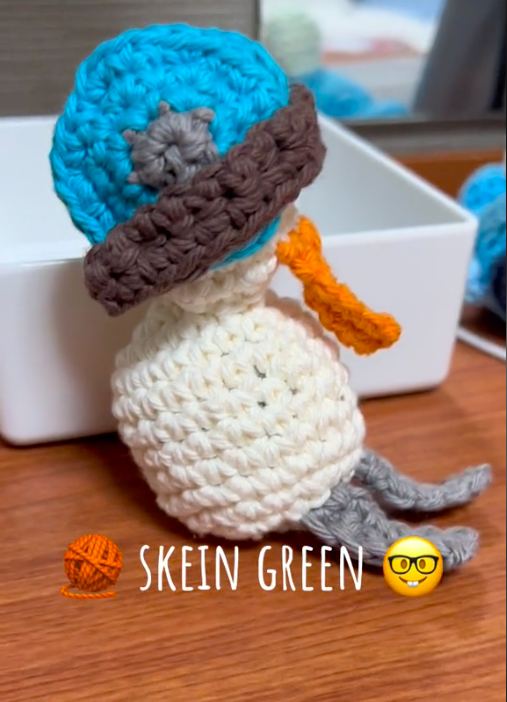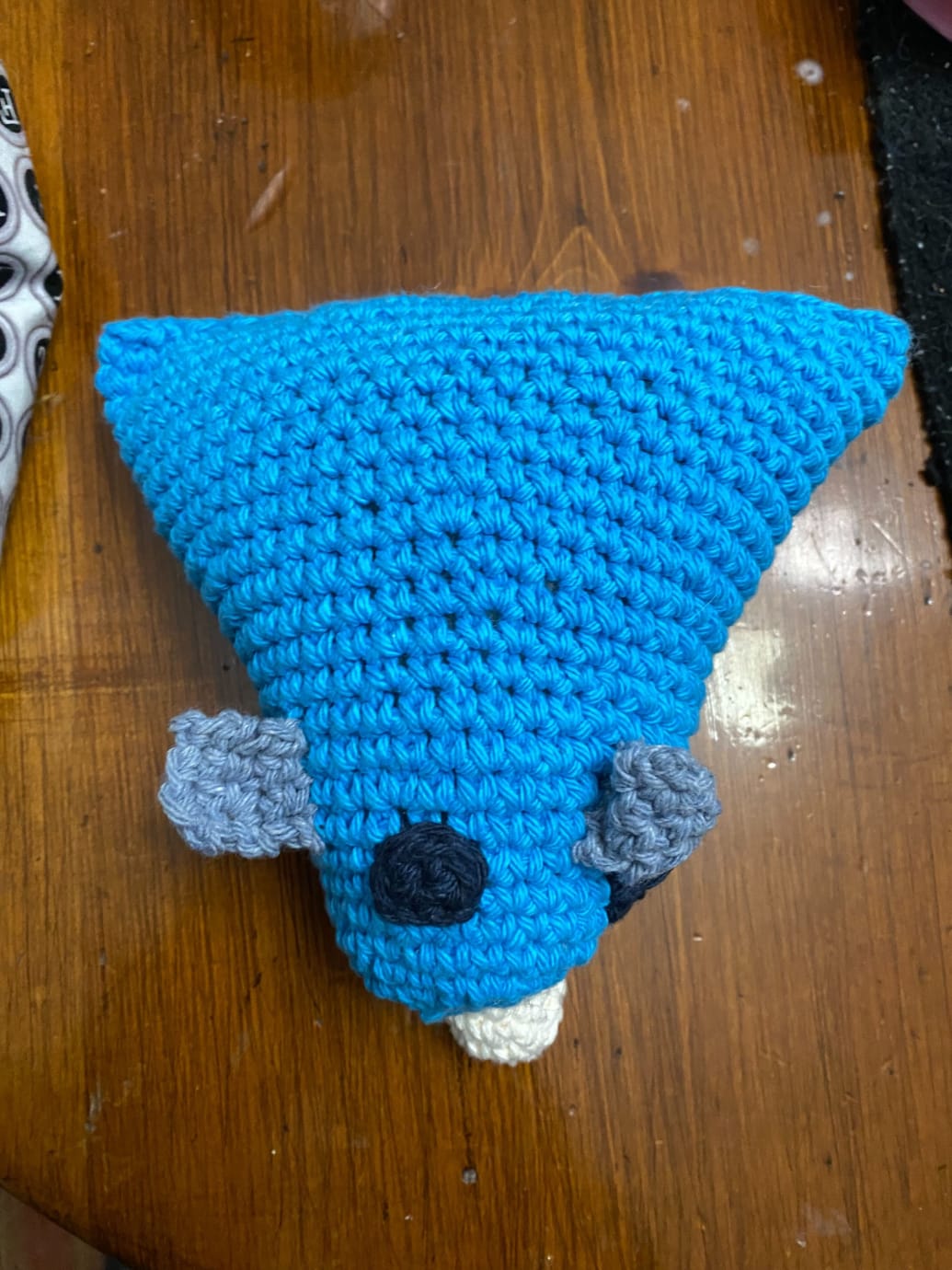
Alex Woolner knows how to put a degree in English to good use.
Past projects include a feminist typewriter blog, retrofitting sticker vending machines to dispense poetry, and a free residency program for emerging artists at a multidisciplinary studio she co-founded with playwright and painter Jason Montgomery in Easthampton, Massachusetts.
More recently, the poet and international educator has combined her interest in amigurumi crocheted animals and ChatGPT, the open source AI chatbot.
Having crocheted an amigurumi narwhal for a nephew earlier this year, she hopped on ChatGPT and asked it to create “a crochet pattern for a narwhal stuffed animal using worsted weight yarn.”
The result might have discouraged another querent, but Woolner got out her crochet hook and sallied forth, following ChatGPTs instructions to the letter, despite a number of red flags indicating that the chatbot’s grasp of narwhal anatomy was highly unreliable.
Its ignorance is part of its DNA. As a large language model, ChatGPT is capable of producing predictive text based on vast amounts of data in its memory bank. But it can’t see images.
As Amit Katwala writes in Wired:
It has no idea what a cat looks like or even what crochet is. It simply connects words that frequently appear together in its training data. The result is superficially plausible passages of text that often fall apart when exposed to the scrutiny of an expert—what’s been called “fluent bullshit.”
It’s also not too hot at math, a skill set knitters and crocheters bring to bear reading patterns, which traffic in numbers of rows and stitches, indicated by abbreviations that really flummox a chatbot.
An example of beginner-level instructions from a free downloadable pattern for a cute amigurumi shark:
DORSAL FIN (gray yarn)
Rnd 1: in a mr work 3 sc, 2 hdc, 1 sc (6)
Rnd 2: 3 sc, 1 hdc inc, 1 hdc, 1 sc (7)
Rnd 3: 3 sc, 2 hdc, 1 hdc inc, 1 sc (8)
Rnd 4: 3 sc, 1 hdc inc, 3 hdc, 1 sc inc (10)
Rnd 5: 3 sc, 1 hdc, 1 hdc inc, 3 hdc, 1 sc, 1 sc inc (12)
Rnd 6: 3 sc, 6 hdc, 3 sc (12)
Rnd 7: sc even (12); F/O and leave a long strand of yarn to sew the dorsal fin between rnds # 18–23. Do not stuff the fin.
Pity poor ChatGPT, though, like Woolner, it tried.
Their collaboration became a cause célèbre when Woolner debuted the “AI generated narwhal crochet monstrosity” on TikTok, aptly comparing the large tusk ChatGPT had her position atop its head to a chef’s toque.
Is that the best AI can do?
A recent This American Life episode details how Sebastien Bubeck, a machine learning researcher at Microsoft, commanded another large language model, GPT‑4, to create code that TikZ, a vector graphics producer, could use to “draw” a unicorn.
This collaborative experiment was perhaps more empirically successful than the ChatGPT amigurumi patterns Woolner dutifully rendered in yarn and fiberfill. This American Life’s David Kestenbaum was sufficiently awed by the resulting image to hazard a guess that “when people eventually write the history of this crazy moment we are in, they may include this unicorn.”
It’s not good, but it’s a fucking unicorn. The body is just an oval. It’s got four stupid rectangles for legs. But there are little squares for hooves. There’s a mane, an oval for the head. And on top of the head, a tiny yellow triangle, the horn. This is insane to say, but I felt like I was seeing inside its head. Like it had pieced together some idea of what a unicorn looked like and this was it.
Let’s not poo poo the merits of Woolner’s ongoing explorations though. As one commenter observed, it seems she’s “found a way to instantiate the weird messed up artifacts of AI generated images in the physical universe.”
To which Woolner responded that she “will either be spared or be one of the first to perish when AI takes over governance of us meat sacks.”



In the meantime, she’s continuing to harness ChatGPT to birth more monstrous amigurumi. Gerald the Narwhal’s has been joined by a cat, an otter, Norma the Normal Fish, XL the Newt, and Skein Green, a pelican bearing get well wishes for author and science vlogger Hank Green.
When retired mathematician Daina Taimina, author of Crocheting Adventures with Hyperbolic Planes, told the Daily Beast that Gerald would have resembled a narwhal more closely had Woolner supplied ChatGPT with more specifics, Woolner agreed to give it another go.
Two weeks later, the Daily Beast pronounced this attempt, nicknamed Gerard, “even less narwhal-looking than the first. Its body was a massive stuffed triangle, and its tusk looked like a gumdrop at one end.”

Woolner dubbed Gerard possibly the most frustrating AI-generated amigurumi of her acquaintance, owing to an onslaught of specificity on ChatCPT’s part. It overloaded her with instructions for every individual stitch, sometimes calling for more stitches in a row than existed in the entire pattern, then dipped out without telling her how to complete the body and tail.
As silly as it all may seem, Woolner believes her ChatGPT amigurumi collabs are a healthy model for artists using AI technology:
I think if there are ways for people in the arts to continue to create, but also approach AI as a tool and as a potential collaborator, that is really interesting. Because then we can start to branch out into completely different, new art forms and creative expressions—things that we couldn’t necessarily do before or didn’t have the spark or the idea to do can be explored.
If you, like Hank Green, have fallen for one of Woolner’s unholy creations, downloadable patterns are available here for $2 a pop.
Those seeking alternatives to fiberfill are advised to stuff their amigurumi with “abandoned hopes and dreams” or “all those free tee shirts you get from giving blood and running road races or whatever you do for fun”.
Related Content
An Artist Crochets a Life-Size, Anatomically-Correct Skeleton, Complete with Organs
Make an Adorable Crocheted Freddie Mercury; Download a Free Crochet Pattern Online
– Ayun Halliday is the Chief Primatologist of the East Village Inky zine and author, most recently, of Creative, Not Famous: The Small Potato Manifesto and Creative, Not Famous Activity Book. Follow her @AyunHalliday.


The depressed snowman in a blue beanie known as “Skein Green” is as much an artistic masterpiece as could ever be conceived by the mind of humanity.
ChatGPT may be a little wonky on the details of math and, well, reality, but it’s been a boon for my German. It is really quite good for language learning.